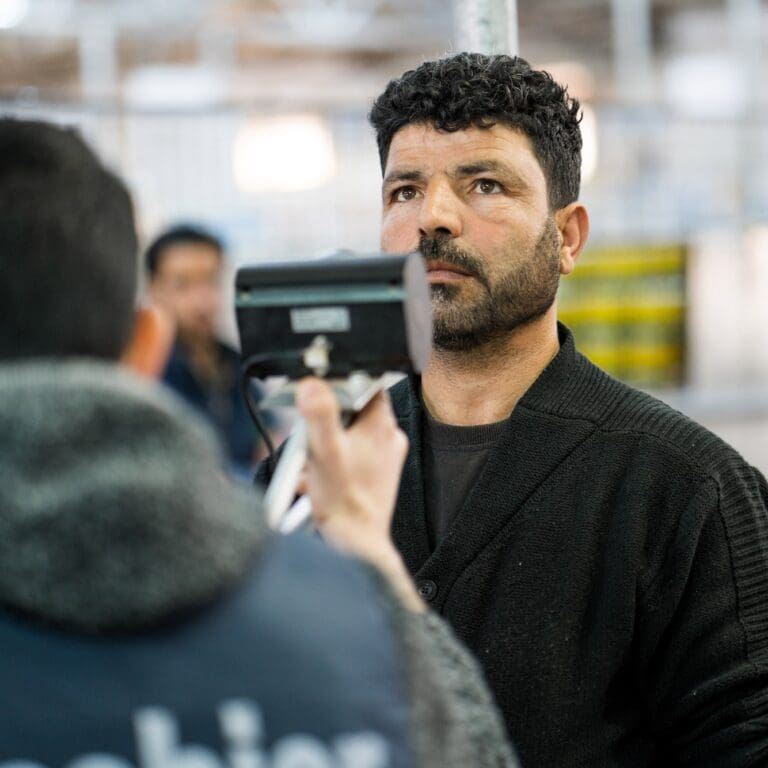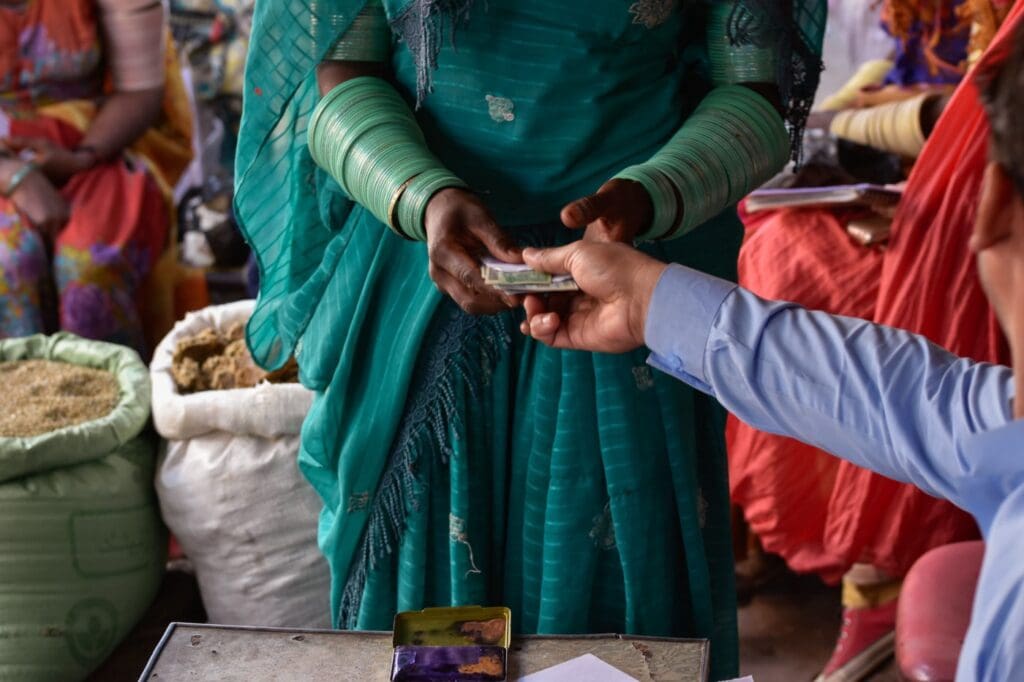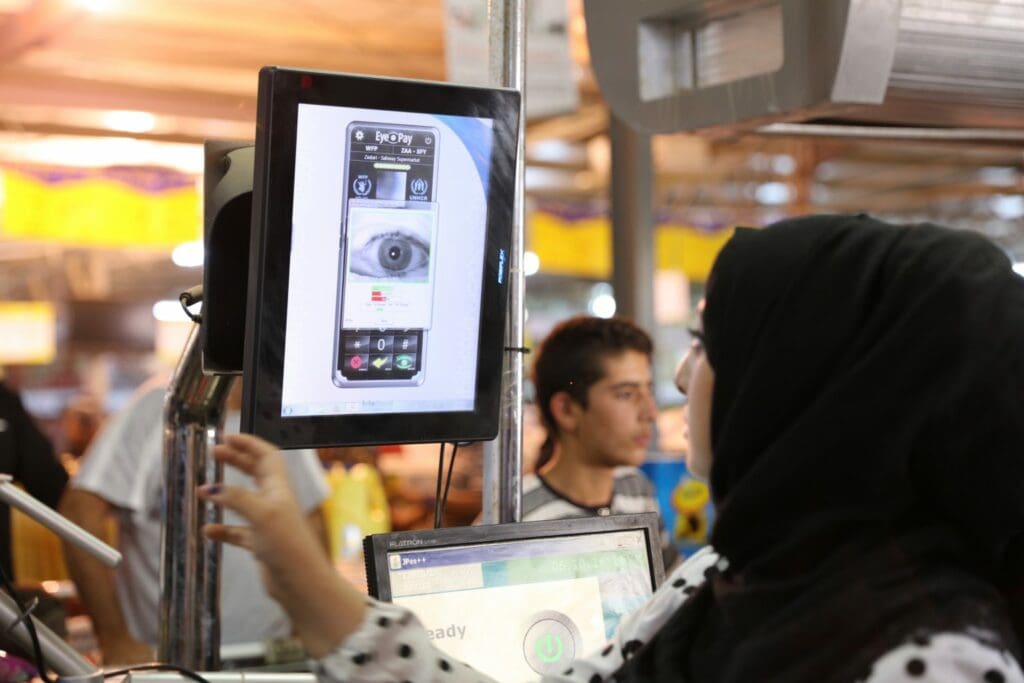How Blockchain Technology Is Helping Refugees Grocery Shop in Conflict Zones

Bassam and his children fled Syria when the war started over nine years ago. They ended up at a refugee camp in Jordan, where his young ones have now lived most of their lives. Bassam works hard to teach them about their culture by cooking the kinds of meals he grew up eating. He shops at a grocery store for familiar ingredients to share the flavors of home with his kids.
That loving errand has been made much easier with Building Blocks – a United Nations World Food Programme (WFP) program using blockchain technology to make life easier for the people we serve.
The Opportunity to Distribute Food Cash
In recent years, the U.N. World Food Programme has significantly scaled up its cash transfers (aka debit cards), because they’re the most effective and efficient way to help the people who need it most. Last year we distributed a record $2.1 billion, reaching over 28 million people in 64 countries. The cards let recipients choose what to buy and inject much-needed cash into local economies.
We depend on local financial institutions to distribute the cash , and we prioritize strengthening the local financial ecosystem. But sometimes (especially in conflict zones), financial service providers are unreliable or just aren’t big enough to process the payments.
So we’re turning to blockchain – a kind of ledger system that works like digital scaffolding for cryptocurrency transactions. Our Building Blocks program uses blockchain to facilitate more efficient, secure and transparent cash transfers while protecting recipients’ data.
So What Is Blockchain, Exactly?
Simply put, blockchains allow two parties to do business without the need for a trusted third party, like a bank. Like emails, information on a blockchain can flow from one address directly to another. The content of the message might be a monetary transfer, a beneficiary’s ID or somebody’s health records, for example.

Where markets are functioning, cash-based transfers allow people to choose what food to buy.
An identical record of all messages on a blockchain is available to every participant on the blockchain, which could be many thousands or more. Because there are so many copies of the data on the blockchain network, it’s nearly impossible for a would-be attacker to alter records or falsify transactions. That makes blockchain much more secure than other traditional, centralized systems.
“Blockchain can revolutionize the way WFP delivers assistance to vulnerable families across the globe,” said Farman Ali, from our Karachi provincial office. “It can bring us closer to the people we serve and allow us to respond much faster.”
Privacy Is Paramount for Refugees
Anonymity is key for communities who have fled conflict zones, and blockchain ensures that their personal information can’t be used against them.
“With blockchain, you can see who is assisting whom in a non-personally-identifiable manner,” says Houman Haddad, head of emerging technologies at the U.N. World Food Programme. With blockchain, people are issued an encrypted ID or code number to distinguish them from others, without revealing their true identities.
Blockchain Lets Bassam Cook Up a Storm in Jordan
For Syrian refugees like Bassam in Jordan, the market where he shops runs on blockchain, so he never has to worry about losing a food voucher or the bank securing his data. Cash from the U.N. World Food Programme is stored in his beneficiary ‘account’ and all of Bassam’s transactions are recorded on the blockchain. Even better, we’ve paired up with UNHCR’s existing biometric identification system that allows refugees to buy food from local shops just by scanning their eyes.
More than 400,000 refugees around the world – including in Syria – can now get groceries using blockchain. And we have a full, in-house record of every transaction without having to share any sensitive data.
Immense Potential for Refugees & Women
Building Blocks was created to help refugees make choices that reflect their needs and interests – especially for women. Because of conflict, women are often forced to become the primary breadwinners and caregivers for their families. Blockchain provides them with greater choice and autonomy, both of which enable women to exercise greater control over their lives. Even in families with two parents, putting debit cards in the hands of women greatly advances gender equality.

A Syrian woman in Jordan’s Azraq refugee camp uses iris scan technology to access her WFP electronic food voucher.
With Building Blocks, we now have real-time control over cash distribution and can troubleshoot issues on the spot. In addition to making life easier for refugees and aid organizations, blockchain also has the potential to allow faster intervention in some of the world’s most difficult places. In vulnerable countries that lack financial infrastructure, blockchain could help us roll out lifesaving cash assistance in a matter of days when disasters strike. We’re already thinking about how to apply the technology to identity management, supply chain operations and disaster response.
A widespread blockchain network could help us improve our cooperation and efficiency, and help us better empower the millions of people we serve around the world.
Donate here to help us expand our Building Blocks program, making humanitarian aid faster, more efficient and even safer.




